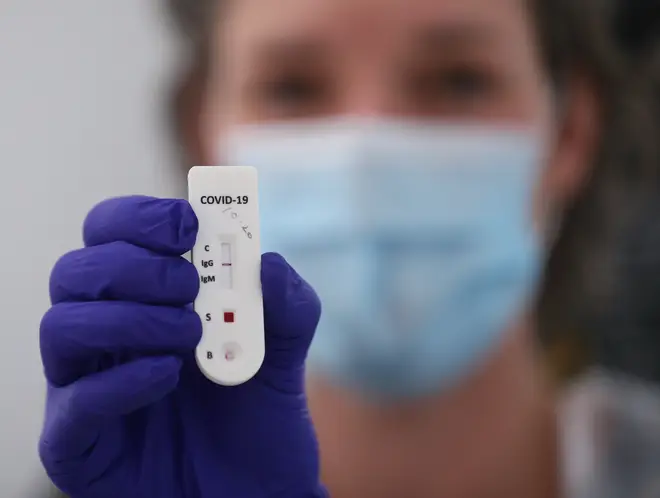
Tonight with Andrew Marr 6pm - 7pm
4 August 2020, 06:34

Reopening schools in September without an effective test, trace and isolation scheme could lead to a second coronavirus wave more than twice the size of the first, according to a new modelling study.
Researchers examined the possible implications of schools reopening in the UK combined with broader reopening of society, such as more parents returning to the workplace and increased socialising within the community.
The scientists from UCL and the London School of Hygiene and Tropical Medicine (LSHTM) found that the NHS Test and Trace programme needs to be scaled up in order to reopen schools safely.
The authors found that "with increased levels of testing... and effective contact tracing and isolation, an epidemic rebound might be prevented".
According to the study published in The Lancet Child And Adolescent Health, a worst-case scenario coronavirus second wave could be 2.3 times higher than the first.
The study comes as Australian research found there were "low" levels of coronavirus transmission in schools and nurseries.
The modelling comes after suggestions that pubs may need to be shut, or social freedoms curbed, in order to allow schools to reopen while keeping the spread of Covid-19 down.
As we reported at the weekend, one Government scientific adviser warned that pubs may have to close in order to reopen schools fully.
The Government aims to test 500,000 people a day by the end of October, minister for regional growth and local government Simon Clarke has told LBC.
On Tuesday morning Mr Clarke said NHS Test and Trace programme "is delivering" but "there's always more to do".
The minister insisted the programme to track those with Covid-19 was working, adding "schools are going to reopen in full in the autumn".

NHS Test and Trace needs scaling up to reopen schools safely - study
In the new study, researchers simulated what would happen in an "optimistic" scenario assuming 68 per cent of contacts of people who tested positive could be traced. In the more pessimistic scenario the system had 40 per cent coverage.
But one of the authors, Chris Bonell, professor of public health sociology at LSHTM, said the current testing system has "about 50 per cent coverage".
"Our findings suggests that it might be possible [to avoid] a secondary epidemic wave in the UK, if enough people with symptomatic infection can be diagnosed and their contacts traced and effectively isolated," he said.
"Reopening schools fully in September, alongside reopening workplaces in society, without an effective test, trace, isolating (TTI) strategy could result in a second wave of infections between two and 2.3 times the size of the original wave.
"Currently, TTI is not achieving the levels that we modelled. Looking at the NHS reports from the TTI system, it looks like it's about 50 per cent coverage."

LBC reporter Rachael Venables takes a coronavirus antibody test
The authors said that without appropriate levels of testing and contact tracing, reopening of schools together with gradual relaxing of the lockdown measures are "likely to induce a second wave that would peak in December 2020 if schools open full-time in September".

Tom Swarbrick speaks to author of report on school re-opening
Dr Jasmina Panovska-Griffiths, senior research fellow and lecturer in mathematical modelling at the Institute of Epidemiology and Health Care, UCL and lead author of the modelling study, said if Test and Trace is "not done effectively or adequately, then there is a risk of an occurrence of a second wave later this year".
She said: "Using the information that we have to date and in the mathematical study that we are talking about, we have fitted the model to data between 21 January this year and 16 June inclusive.
"We predict ... that under the scenarios, that under different Test and Trace scenarios, we ... are able to avoid a second wave if we test sufficiently, (a) sufficient number of people with symptoms and trace their contacts sufficiently, but if this is not done effectively or adequately, then there is a risk of an occurrence of a second wave later this year and peaking in December for the scenario of full opening of schools (in) society."